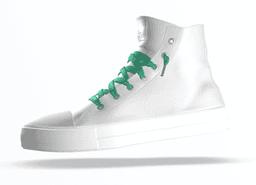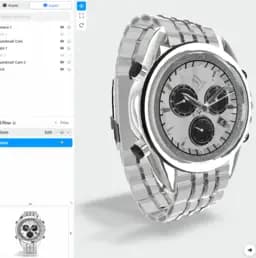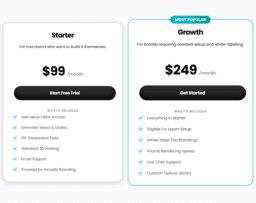8th Wall vs Zappar – Which Has a Wider Reach?
For immersive, high-quality, app-less AR experiences, 8th Wall is the go-to due to its robust tools and WebAR capabilities. However, if ease of use, beginner-friendly interface, and app-based AR suit your project more, then Zappar is the better choice.

Key Differences Between 8th Wall and Zappar
- 8th Wall is based on WebAR, enabling AR experiences without an app, whereas Zappar hosts AR experiences via its app.
- 8th Wall requires knowledge of web technologies like JavaScript, WebGL, and HTML5, while Zappar offers an uncomplicated experience for beginner coders with automatic features.
- 8th Wall provides a cloud-based coding environment with tools like the 8th Wall AR Engine and Cloud Editor. On the other hand, Zappar has ZapWorks Studio for efficient creation of 3D artifacts for interactive programs.
- Zappar’s pricing model is more transparent and flexible, while 8th Wall could be costlier for a commercial license.
| Comparison | 8th Wall | Zappar |
|---|---|---|
| Founded | Palo Alto, California | Undisclosed |
| Platform | Web-based AR(DASH)WebAR | XR platform & creative studio |
| Usage | No app required | AR experiences hosted via Zappar App on iOS & Android |
| Tools | 8th Wall AR Engine, Cloud Editor | ZapWorks Studio |
| Features | 6-DoF Tracking, Lighting and Surface Estimation, Image Target Tracking, Hand tracking | World tracking, Facial tracking, 3D artifact creation |
| Expertise Level Required | Understanding web technologies like JavaScript, WebGL, HTML5 | Tools for beginner, intermediate, and expert coders |
| Integration | AR QR Codes | Integration with existing apps, Sketchfab’s 3D model library |
| Cost | Commercial license exceeding 2000 USD per month | Undisclosed |
| Compatibility | WebAR technology alone | Compatible with Apple Vision Pro Headset |
| Support | Documentation, Community support | Documentation, Community support |
What Is 8th Wall and Who’s It For?
8th Wall, based in California, is the ground-breaking platform for developing Web-based Augmented Reality (WebAR) and was acquired by Niantic Inc. Its mission is to make AR accessible to all and has already powered over 2,000 commercial experiences across various sectors. This platform targets developers with an understanding of web technologies such as JavaScript and WebGL.
WebAR can be experienced right from your smartphone without the need for any apps. With tools like the 8th Wall AR Engine and Cloud Editor, 8th Wall simplifies the process from development to distribution of AR content.

Pros of 8th Wall
- Accessibility: Experiences accessible on any smartphone, no app required
- Tools for Developers: AR Engine and Cloud Editor assist developers
- Immersive AR: Supports 6-DoF Tracking, Lighting and Surface Estimation
- Founder’s Expertise: Founded by a PhD in Computer Vision and veteran of Facebook & Google
Cons of 8th Wall
- Requires Understanding of Web Tech: Needs knowledge of JavaScript, WebGL, HTML5
- Cost: Higher commercial licensing cost
What Is Zappar and Who’s It For?
Zappar is a seasoned name in the domain of Extended Reality (XR) solutions and is known for its end-to-end camera strategy. It caters to an expansive set of domains including packaging, retail, and learning. Zappar is also recognized for its creative studio and toolset, ZapWorks, for creating impressive AR experiences.
With over 12 years of experience in providing AR solutions, Zappar is ideal for brands seeking increased engagement, memorability, and conversion rates via XR. Zappar’s tools offer an enhanced and inclusive experience, accessible even to the blind and partially sighted.

Pros of Zappar
- Inclusivity: Accessible to blind and partially sighted
- Easy Creation: Uses a drag-and-drop mechanism for AR experience creation
- Versatility: Suitable for multiple domains
- Experience: Over 12 years in AR
Cons of Zappar
- App-based AR: AR experiences are generally hosted via Zappar App on iOS and Android
Code Examples for 8th Wall & Zappar
8th Wall
This example will show a 3D model of a vibrant, oscillating sphere, using WebXR for 8th Wall. Required: basic knowledge of JavaScript, and 8th Wall platform.
//8th Wall Code
let sphere;
let time = 0;
XRExtras.AFrame.loadAFrameForXr({
version: 'latest',
}).then(() => {
AFRAME.registerComponent('oscillator', {
init: function () {
sphere = this.el.object3D;
},
tick: function () {
if (sphere){
time += .01;
sphere.position.y = Math.sin(time);
}
}
});
});Zappar
Next, we’re implementing a face tracking feature using Zappar’s platform. Your script should be added to a face-tracking-group component. Basic JavaScript and Zappar platform familiarity required.
//Zappar Code
Z.faceTracker().then((faceTracker) => {
const faceTrackerGroup = new ZapparThree.FaceAnchorGroup(camera, faceTracker);
scene.add(faceTrackerGroup);
//Add 3D model to the face tracker group
let faceMask = new THREE.Mesh(
new THREE.SphereGeometry(0.5),
new THREE.MeshBasicMaterial({ color: 0xffff00 })
);
faceTrackerGroup.add(faceMask);
});Note: Always ensure camera or scene referred in the code have been defined prior in your project.
Choosing the Right Path: 8th Wall or Zappar?
In the surging tide of AR development, two pioneers vie for your attention—8th Wall & Zappar. Let’s dissect this techno-duel, segment by segment.
1. For the Innovators in Retail
8th Wall steps ahead with Human AR. The inclusion of hand tracking & SLAM creates a seamless AR integration experience. Perfect for virtual retail demos—adding that extra allure to product displays.

2. For AR Enthusiast Developers
Zappar wins the race with the ZapWorks Studio. It offers an efficient workflow for AR experience creation— its drag-and-drop mechanism caters to all—from beginner to expert coders.

3. For the Enterprise Players
For the ones seeking enterprise-grade offerings, 8th Wall holds an edge with its seamless SLAM engine and full suite of developer-focused offerings. Its WebAR experiences boast a robust, unmatched performance.

4. For the Financially Conscious
Weighing options closely, Zappar proves to be a more cost-efficient solution—with transparent pricing models, flexible plans, and diverse AR experiences.

While 8th Wall leverages its top-tier technology stack to deliver app-less, immersive AR experiences, Zappar offers a cost-effective, intuitive platform for interactive XR creation. The final say? Choose as per your AR ambition.







